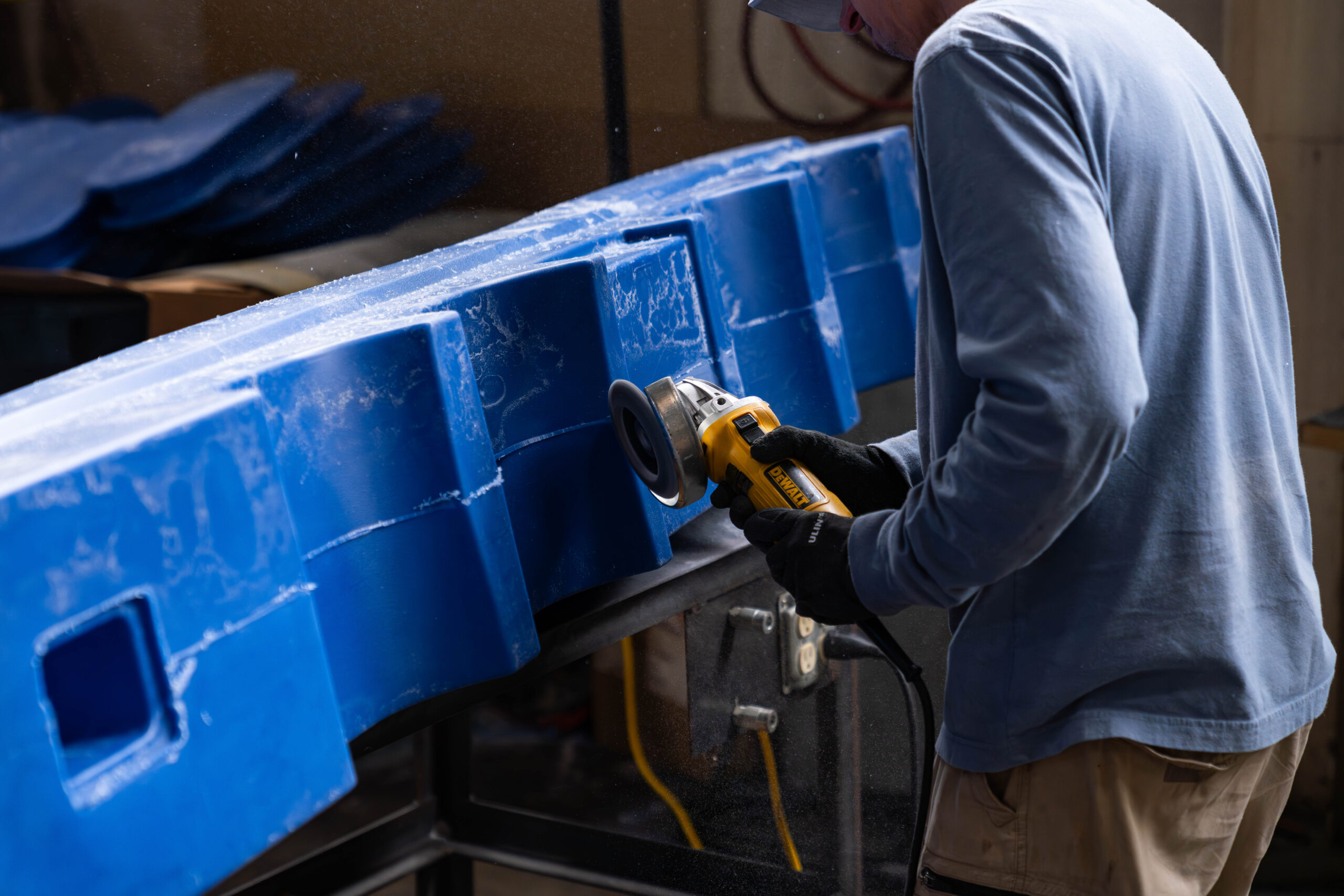Precision in Rotational Molding

An Industry Expert’s Perspective on Achieving Accuracy in a Traditionally Flexible Process
Rotational molding, commonly known as rotomolding, is widely recognized for its ability to produce strong, seamless, hollow plastic parts. Yet despite its advantages in durability and design flexibility, one lingering assumption continues to limit its perceived potential: that it lacks precision.
This belief stems from the process’s reliance on heat and rotation, rather than pressure or injection, to shape the part. But modern advancements in tooling, process control, and post-molding techniques have changed the game. Precision in rotational molding is not only achievable, it is being implemented across industries where accuracy, repeatability, and performance matter.
Why Precision Was Once a Challenge
Traditional rotomolding involves heating powdered plastic inside a hollow mold that rotates on two axes. As the mold rotates, the polymer melts and coats the interior surfaces, forming a part with uniform wall thickness and no seams.
Because the process is inherently dependent on thermal flow rather than pressure-driven injection, early generations of rotomolding equipment and tooling often struggled to deliver parts with tight tolerances. This gave rise to the misconception that rotomolding was best suited only for oversized, low-precision products such as tanks or bins.
But the reality is that precision is not dictated by the process alone, it’s determined by how the process is executed.
What Enables Precision in Modern Rotational Molding
Achieving accuracy in rotomolding requires a comprehensive approach that combines technological control, tooling strategy, and post-molding refinement. The following methods are critical to manufacturing parts that meet exacting specifications.
- Advanced Process Control Systems
Modern rotational molding machines are equipped with computer-controlled heating, rotation, and cooling systems. These controls allow for:
- Consistent temperature management throughout the cycle
- Predictable resin flow and wall thickness
- Reduced variability between production runs
Properly calibrated equipment ensures that the same thermal and rotational conditions are maintained from part to part, which directly impacts dimensional accuracy and structural integrity.
Note: Precision begins with consistency. Without a repeatable thermal profile, other efforts toward accuracy may be undermined.
- Custom Tooling and Mold Design
The quality of the mold has a significant impact on part precision. Custom-designed molds, built for the specific requirements of the part, offer better:
- Dimensional control
- Shrinkage management
- Structural support during cooling
Fixtures and support frames are also used to maintain shape and alignment, especially for parts with long spans, integrated features, or thin walls.
Best Practice: Engineers should collaborate closely with mold designers to ensure that thermal expansion, material shrinkage, and cooling behavior are factored into the tooling design from the outset.
- Post-Molding Machining and Finishing
For applications requiring tight tolerances or complex interfaces, secondary machining and trimming are essential. Once the part is molded, precision enhancements such as:
- CNC trimming for clean edges
- Drilled holes for fasteners or mounting
- Machined interfaces for part mating
can be applied to meet final dimensional requirements. These processes bring rotationally molded parts in line with those produced through injection molding or machining, without sacrificing the structural or economic benefits of rotomolding.
Important Distinction: Post-molding processes are not a workaround; they are an integrated part of a precision-focused production system.
Why Precision in Rotomolding Matters
Precision in plastic molding isn’t just about aesthetics; it directly impacts functionality, safety, and cost. Industries that demand performance and consistency, such as medical, aerospace, agriculture, defense, and industrial equipment, rely on precision to:
- Ensure accurate fit during assembly
- Maintain consistent mechanical properties
- Support functional integration (gaskets, fasteners, electronics)
- Reduce post-assembly adjustments or rework
- Improve end-user experience with tighter design tolerances
Well-executed rotomolding can meet these demands when the process is strategically planned and controlled.
When to Consider Precision Rotational Molding
Not every project requires precision, but many benefit from it, even if that benefit wasn’t initially considered. Rotomolding is especially well-suited to applications where:
- Seamless, one-piece construction is desired
- Part strength and durability are critical
- Large or geometrically complex shapes must be formed
- Tooling cost or volume flexibility is a concern
- Design aesthetics and surface uniformity are priorities
For product designers and engineers, understanding what’s achievable with today’s technology can open the door to more efficient, cost-effective designs.
Educating for Better Outcomes
In many cases, the barrier to leveraging precision in rotomolding is simply a lack of awareness. Misinformation or outdated assumptions can cause decision-makers to default to more expensive or restrictive processes.
That’s why it’s important for manufacturers, engineers, and procurement professionals to stay current with advancements in the field. When teams understand the full capability of modern rotational molding, including its precision potential, they can unlock greater design freedom, lower tooling investment, and higher long-term value.
The key is knowing what to ask for, what tolerances can be achieved, and how to plan for them early in the design process.
Precision Is Possible
Rotational molding has evolved. What was once considered a process for basic shapes and broad tolerances is now delivering accurate, repeatable, and performance-driven solutions, when applied with the right expertise.
The combination of advanced molding systems, engineered tooling, and post-molding refinement techniques means that parts once thought to be out of scope for rotomolding are now well within reach.
For those seeking precision without compromising on durability, cost efficiency, or design flexibility, rotational molding is a viable, forward-thinking solution.
About CPI
CPI is a recognized leader in advanced rotational molding solutions, offering deep technical expertise, state-of-the-art manufacturing capabilities, and a commitment to quality at every level. With decades of experience supporting OEMs and engineers across a range of industries, CPI specializes in helping teams design for precision, optimize for performance, and deliver high-value products through the power of rotational molding. Whether supporting early-stage design reviews or full-scale production, CPI brings clarity, consistency, and craftsmanship to every project.
